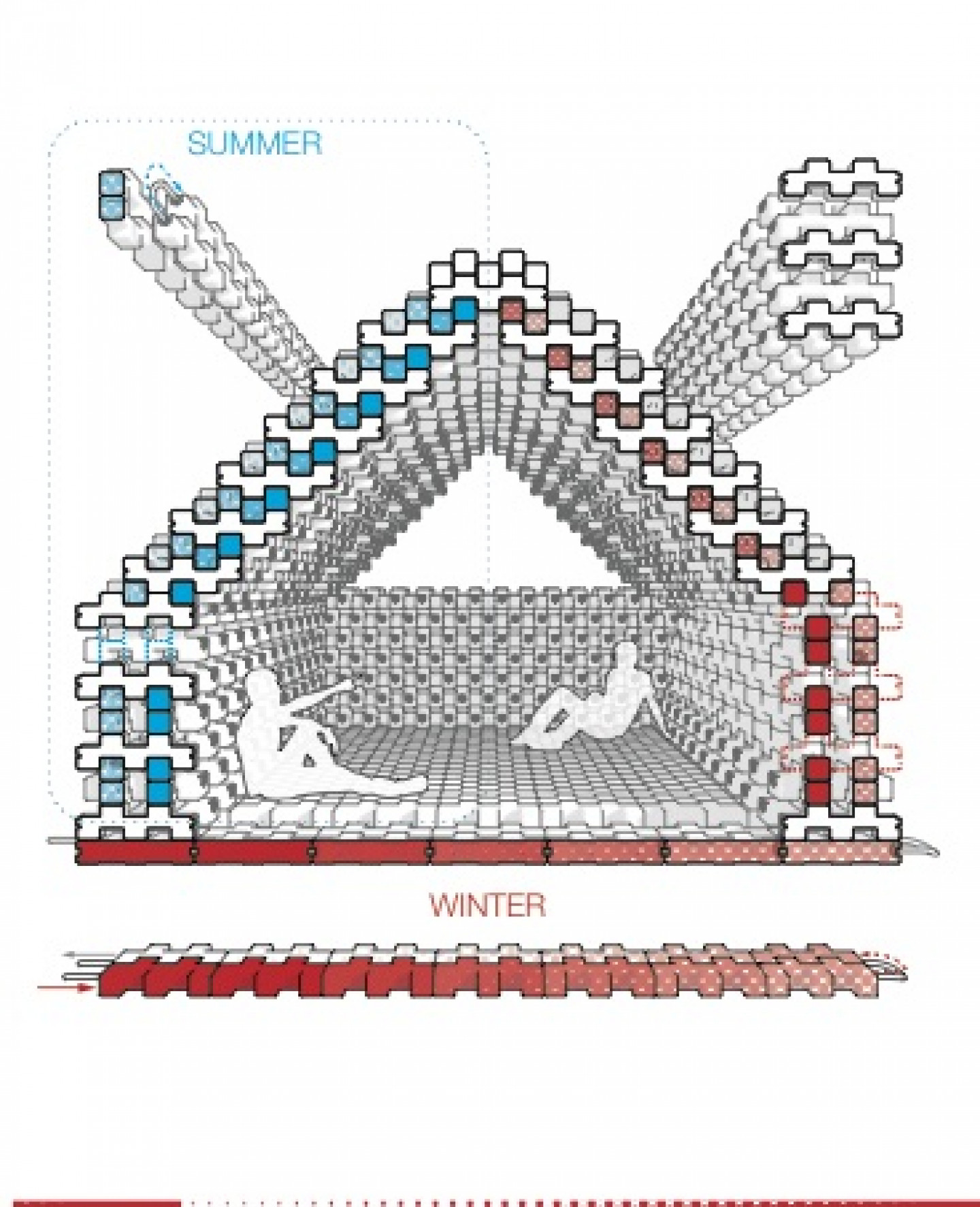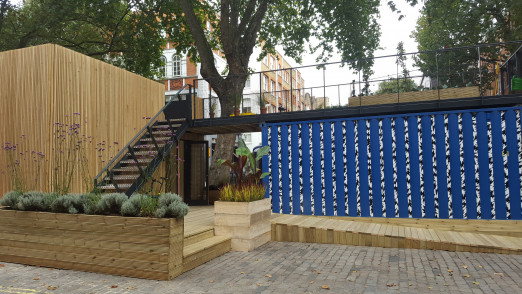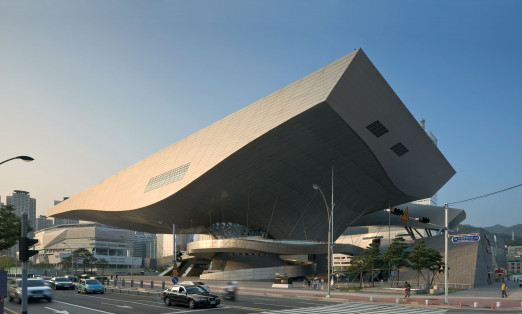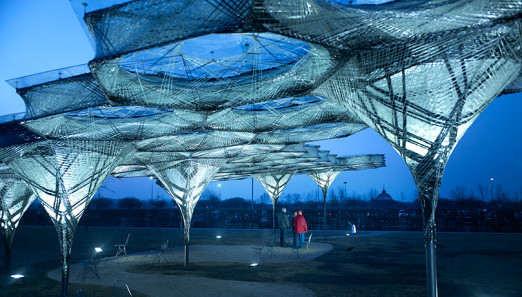Like all buzzy ideas that capture and name the many forces at work in society at a moment in time, the notion of ‘innovation’ though spread-thinly, speaks to a deep- rooted public belief that we can make the world a better place. A New House For London and ‘Trans-Structures’, the topic and title of architect Matyas Gutai’s recent book, are both examples of innovation as defined by Donald Norman and Roberto Verganti, scholars of Design Thinking and innovation. Radical innovation they argue is “‘a change of frame’ (doing what we did not do before).” Radical innovation as change of frame means changing how we frame a product orproblem, which is what Matyas Gutai explores in his book Trans Structures: Fluid architecture and liquid engineering reponse-able innovative structures.
Gutai's work grabbed the media spotlight earlier this year. From CNN to the UK’s Daily Mail, his ‘water house’ captured the public imagination. Trans Structures is a short history of ideas around strength and permanence, materials and change as played out in architecture. It also explores a dynamic relationship between engineering and architecture in projects such as: the Busan Cinema Centre by COOP Himmelblau; the BIQ project by architects SPLITTERWERK and Arup; and of course his own Allwater Pavilion.
(The Busan Cinema Centre by COOP Himmelblau)
The book creatively challenges common assumptions, not least around the notion of ‘sustainability’. An idea which speaks to our aspirations for a better world but is also a conservative notion, sustainability's reactive logic and vision is sometimes guided by simplicity and equilibrium rather complexity and change. The buildings and engineering championed by Gutai adaptively mesh with the environment through what Gutai calls – response-ability, an idea powerful enough to cut through the dodgy joinery of the pun.
Gutai’s Trans Structures is a creative and systematic work of originality, it reframes and seeks to make us think with a freash perspective about the ways in which architects and engineers have been tackling the threat to our future.
Could you tell us a little bit about your own background and what inspired your interest in Trans-Structure?”
Matyas Gutai: I am an architect; I studied architecture at the University of Tokyo and at Budapest University of Technology and Economics. I wrote my PhD thesis at the University of Tokyo. My PhD thesis focused on sustainability. As an architect, my main concern about sustainability was its fundamental effect on technology and innovation. I was wondering if there is a possibility to find a new approach to sustainable architecture, especially one that didn’t involve any recent technological solutions (solar panels, PV, etc). Naturally, I did not oppose those solutions, but as an architect I was hoping to rely only on the tools of architectural design.
Architecture is about stability (permanence) in the sense of structure and also in the sense of an unchanged state of microclimate. The conventional thinking is to design elements with resistance or 'strength', so change does not occur.
.jpg?1444994771)
I lived for about eight years in Japan, which completely changed my thinking about permanence. Western thinking is based on resistance and protection, while the Japanese perspective is based on constant adaptation. It is like when someone compares the fighting style of a knight with aikido. The latter is actually not just adaptive, but is also capable of using the enemy’s force for its own benefit. This was the point when I assumed that a new approach to permanence could bring new opportunities in architectural design. I started to look for a new solution, based on constant change and adaptation. I believe these kind of solutions can lead you to new possibilities in architecture. This is the major driving force in my work.
It is important to note that I have great respect for existing innovations. I’m not saying that existing solutions are bad. However the philosophy of permanence behind current technologies dominate our architectural thinking. I am only hoping that we can change that in the near future.
Could you tell us a little about the history, and name, of Trans-Structures?
Matyas Gutai: The idea of Trans-Structures comes from the fact of being in constant transition. Conventional technologies are based on predetermined states of engineering and the main characteristics are set and are being constant. In case of Trans-Structure however, these values change all the time in order to generate an ideal response to the actual conditions.

Naturally, conventional systems also do change to certain extent. Mechanical engineering constantly adjusts our environment of course. However, these are ‘programmed’ states and changes, defined by user control or external monitoring.
Trans-structures are based on ‘embedded responsiveness’. The important difference is that instead of having just a few choices (On/Off), the options are practically almost unlimited. Between the two extreme cases, we have rich variety of options. More importantly, since the environment itself generates these options, we do not need an in-between monitoring and control system.
How does a Trans-Structure mobilise new thinking around science and the natural world?
Matyas Gutai: I think there is currently a paradigm shift in field of architecture and engineering. On one hand, new technologies allow mass customization for our prefabricated buildings, which gives us the opportunity to design more complex and customized building structures. On the other hand, our design thinking gradually shifts from a static image of buildings into responsive and kinetic systems. The idea of Trans-structures brings a new aspect in this phenomenon with the embedded responsiveness of materials and with the new approach to permanence.
Which architects and engineers are the leading pioneers in exploring this area?
I have great respect for Frank Lloyd Wright, who was among the first modern architects who extensively worked with water systems (embedded in the structure) to achieve ideal microclimate. According to Reyner Banham, he did not see mechanical engineering as a direct remedy but rather an element of the design (Architecture of the Well-tempered Environment).
Le Corbusier was the first to seek more freedom (more transparency) in design by introducing a tempered glass facade for his project in Moscow (the project failed due to the technological level of glass sealing). This was an important lesson for me to learn, since it clearly represented the impact of engineering thinking on architectural design.
I highly respect the engineer Josef Gartner, who invented a heating-cooling glass façade (curtain wall system). The medium flows inside the steel structure. His innovation clearly shows the unique properties and potential of a heated-cooled transparent surface (eliminating humidity and condensation problems, etc.), that Water House and All-Water facades can cope with.
Among active architects, I greatly respect Renzo Piano (water-steel structure of Pompidou), Nicholas Grimshaw (water facade and water storage of British Pavilion in Seville Expo), Martin Pauli and Jan Wurm (ARUP).
I believe the most important thinker of our time about embedded responsiveness (a crucial element of Trans-structure) is Prof. Achim Menges at University of Stuttgart. Doing an interview with him for the Trans-Structures book was a unique experience and a great honour.
Finally, I am indebted to Prof Kengo Kuma, who not only supported this research (when I was member of his laboratory at University of Tokyo) but also worked on his own water brick project, which was very inspiring for me.
What distinguishes the idea of the Trans-Structure from the Smart Building, the Passive House and the conventional notion of the Sustainable?
Matyas Gutai: The goal is the same (permanence in terms of structure and microclimate). The general strategy of Passive House is to avoid any change, like using thick insulation to protect the microclimate (the material properties directly remedy any change in the environment).In the case of the Smart Building, the permanence is partially based on responses, which are managed by a complex monitoring and control system.

I believe Trans-Structure is a little bit of both: permanence is achieved by generated responses of the structure (like Smart Building), but these responses are based on the natural embedded properties of the utilized materials (like Passive House). In the Water House for example, the balance in microclimate is achieved by the automatic responses of the connected water volumes in the structure.
There is however another important difference. The Smart Building or Passive House is not necessarily applicable for any climate (especially the latter). In the case of the Water House for example, the necessary thermal storage was much larger for the European project (6 months) than for the Japanese one (1 week), since the high solar gain in Japan allowed us to design an energy-efficient building without any insulation. Such kinds of responsive systems work very well in Asia and can lead to new sustainable solutions that are more applicable in Asia. This is the other reason while I am living and working in Asia at the moment.
Where you surprised by the degree of attention the All-Water works garnered?
Matyas Gutai: Yes, I was surprised about it. I am greatly honored by all the attention and interest in the technology.
Is the idea of Trans-Structures gaining any purchase/momentum among engineers and architects?
Matyas Gutai: Yes, I do believe so, but as one can expect, this process is slower than in case of other fields of industry since in case of construction the risks involved are much higher in terms of investment and warranty. Still, the innovation is already being followed up by designers and manufacturers and I have started negotiations with a few companies about implementing/manufacturing the technology. I am greatly honoured by their attention.
Trans Structures by Matyas Gutai is published by Actar.
Intro and interview by John O'Reilly





